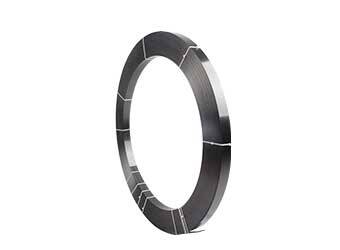Solutions
Horse Construction offers full range of structural strengthening materials with technical supports, documentation supports, products supports, project supports.
Not Suitable For The Use Of Carbon Fiber For Structural Strengthening

Carbon fiber fabric can be successfully used for seismic, shear and flexural reinforcement of concrete structures. However, it should be pointed out that because of the inherent stress characteristics of carbon fiber cloth reinforcement structure, many concrete structures are not suitable for reinforcement with carbon fiber cloth, so it is necessary to analyze its applicability.
So under what circumstances is it not suitable to use carbon fiber cloth reinforcement method for construction reinforcement? The following Horse construction will answer for you.
01 Stiffness question
When the concrete structure and roof structure are too deformed and cracked due to lack of rigidity, which affects the application, it is not suitable to use carbon fiber cloth to reinforce. Studies have shown that for beams, plates and other transversely stressed members, when carbon fiber is used for reinforcement, under normal operating limit conditions, the effect of carbon fiber on the improvement of structural rigidity is less than 10%, or no improvement at all.
02 The scope of application of carbon fiber flexural reinforcement
When the concrete structure is reinforced with carbon fiber cloth because of its poor flexural bearing capacity, the damage shape of the reinforced structure depends on the reinforcement of the original structure on the one hand, and on the other hand the amount of carbon fiber. Now assuming that the original structure is a suitable reinforcement member, the damage shape of the reinforcement structure can be divided into the following three conditions.
⑴The amount of carbon fiber is less. When damaged, the marginal concrete in the compression zone is crushed, the tension steel bar yields, and the carbon fiber can reach a higher tensile strain.
⑵The amount of carbon fiber is moderate. When damaged, the marginal concrete in the compression zone is crushed, the tensile steel bar yields, and the carbon fiber can reach a certain medium tensile strain.
⑶ More carbon fiber is used. When damaged, the marginal concrete in the compression zone is crushed, the tension steel bar yields, and the carbon fiber strain is very low.
Among the above three situations, the third situation is not suitable because of the large amount of carbon fiber and the low strength utilization rate. The first reinforcement method is suitable for beams with a larger section height, and the second reinforcement method is suitable for slabs or flat beams with a smaller section height. This is mainly because for plates or flat beams, when the carbon fiber does not reach a high tensile strain, the structure can be damaged due to excessive deformation. The detailed limit depends on the ultimate tensile strain and loading method of the carbon fiber.
03 Anti-torsion question
For the torsion reinforcement of concrete structures with carbon fiber materials, there are few studies at home and abroad at present. From the perspective of the torsion damage mechanism of the concrete structure, no matter whether the fiber direction of the carbon fiber is perpendicular to the axis or parallel to the axis, it can restrain and change the development of oblique cracks and play a certain role in reinforcement.
However, because when carbon fiber is used for reinforcement, on the one hand, the cracks in the component are now formed, and the spread of the cracks has been determined. On the other hand, because the ultimate strain of carbon fiber can be as high as 10000με, and the ordinary steel has a strain of less than 2000με. If the strain is increased to more than 4000με, the width of the concrete cracks has spread very large, and it must begin to develop to other surfaces, the structure is close to damage, and the stress that the carbon fiber can reach at this moment can still be very low. Therefore, the role of carbon fiber in reinforcing the torsion member must be determined through further research.
04 For some structures with large deformation, the effect of carbon fiber reinforcement is not very satisfactory.
Although carbon fiber itself has the characteristics of high strength, and the specification stipulates that the design tensile strength of the first grade carbon cloth in the reinforcement of important components is 1600MPA. However, due to the large deformation of the component itself, when the carbon fiber may not reach 1600MPA, the carbon fiber itself has been destroyed. As a result, the strength utilization rate of carbon fiber is low, and the high strength of carbon fiber cannot be fully utilized. So how to deal with this situation? If the reinforced component has a certain deformation, but the deformation is not too large, the reinforcement method of sticking steel plate can be used for reinforcement. After all, the strength utilization rate of steel plate is obviously better than that of carbon cloth. If the reinforced component deforms greatly, the pre-stressed reinforcement can give full play to its value.
You can find anything here you are in need of, have a trust trying on these products, you will find the big difference after that.

High strength, unidirectional carbon fiber wrap pre-saturated to form a carbon fiber reinforced polymer (CFRP) wrap used to strengthen structural concrete elements.

High strength, unidirectional carbon fiber sheet pre-saturated to form a carbon fiber reinforced polymer (CFRP) sheet used to strengthen structural concrete elements.

High strength carbon fiber reinforced polymer(CFRP) plate for structural strengthening and concrete repair